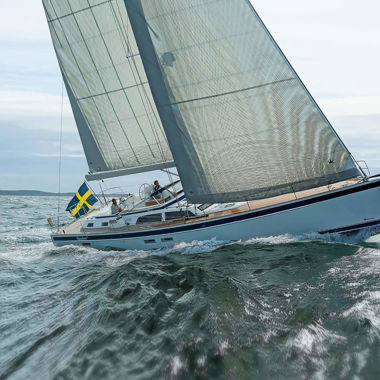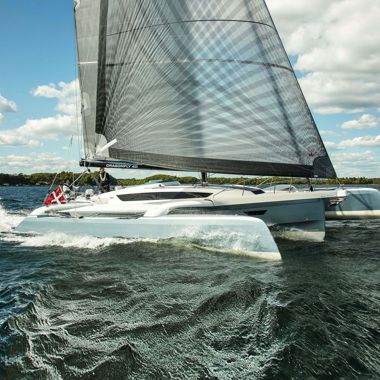

How do I choose what type of sail to go for?
At Elvstrøm Sails, we always start out with your requirements and your way of sailing.
Elvstrøm Sails has a product range which has been divided into six segments to make it easier for you to choose your next set of sails. The segments have a name each and are profiled towards different types of sailors.

The Sail Selector
What would be a common sail setup for my boat? And perhaps more importantly - what would match the way I sail? This is where the new Upwind Sail Selector comes into play at Elvstrøm Sails.
This new tool gives a great overview - and when you want to dive deeper into our technologies and options, then there is the Sail Configurator.

TECHNICAL QUESTIONS
What are sails made of?
There are many ways to make sails - both in designs and of course in terms of the materials.
To keep everything simple, we have made our product lines in a way, where everything can basically be divided into three material types.
The material types are placed across our six different segments of sails - all defined by the type of sailing you do the most.
Our segments cover all aspects right from the family holiday over the adventurers to die-hard-racers. We have options for everyone.
TECHNOLOGY
How do I assess what type of sail to go for?
When choosing sails, you should always consider the durability versus the performance. Some materials are much better than others when it comes to holding a stable shape, thus giving you optimum performance.
This is why EPEX has been a big step ahead in comparison to for instance woven polyesters as it has much less tendency to stretch. And when the material stretches – the sail gets more and more out of shape, eventually making the sail slower.
This is also why you can navigate through our six main categories of sailing - each of them has sail performance indicators – have a closer look on the button below!
What are the differences between the materials?
Here is our materials section. It shows and highlights each fibre and sail cloth material we offer. The list also shows the appearance of each type.
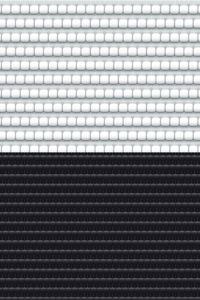
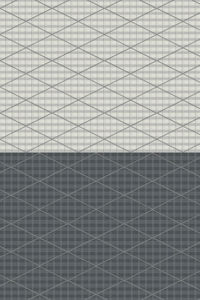

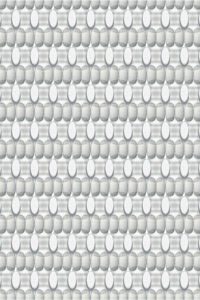


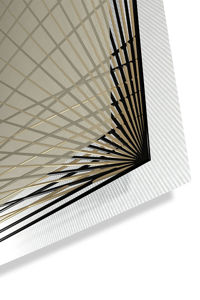
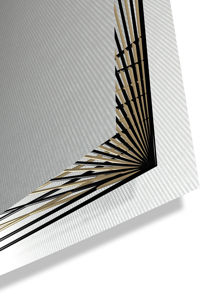
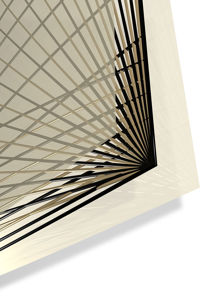
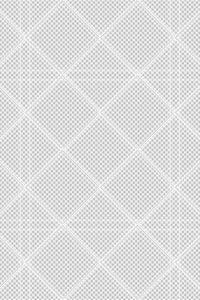
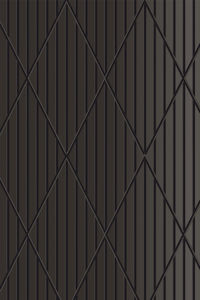
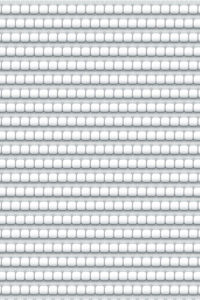

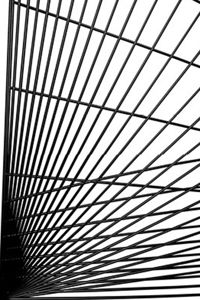
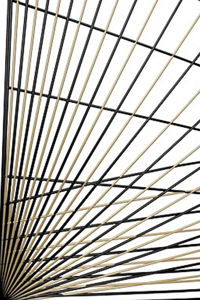
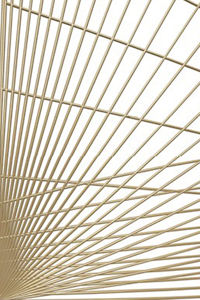
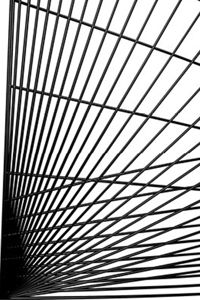
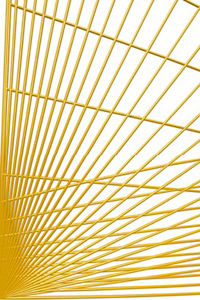
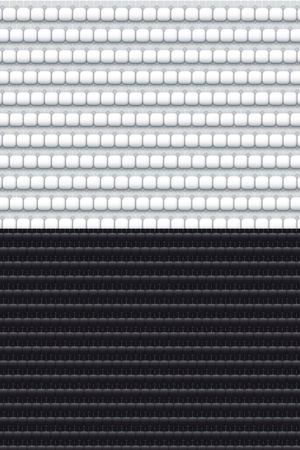
WOVEN POLYESTER
Dacron, White or Black
Woven polyester is a very durable fabric with a good UV resistance, flex and is overall an economical choice. We have a full range of Dacron styles and qualities. The woven polyester comes in different qualities with high tenacity fibers that resist long term loads. Ranging from an all-round Dacron cloth to high-quality cloth with improved stretch resistance.
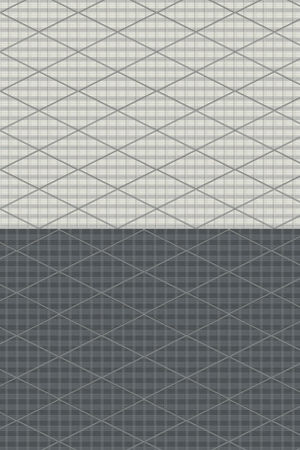
POLYESTER LAMINATE
A 5-layer construction, White or Grey
Polyester laminate is a stable 5-layer construction that combines a thin woven polyester with low stretch-oriented fibers between layers of polyester film. The stability gives the boat a good performance. Polyester laminates are very UV resistant and durable with a competitive performance/price ratio.
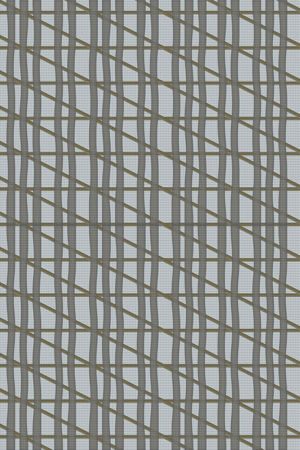
eXRP CRUISE LAMINATE
An EKKO option with recycled materials
eXRP cruise is a high-end laminate, where the UV-protective film, the taffeta, and the polyester fibers are made from recycled polyester. The combination of black polyester fibers and white taffeta makes up for a greyish look. The eXRP cruise comes in different qualities, all stabilized with UPE virgin fibers. The material is soft and easy to handle, and furls easily when used in furling sails.
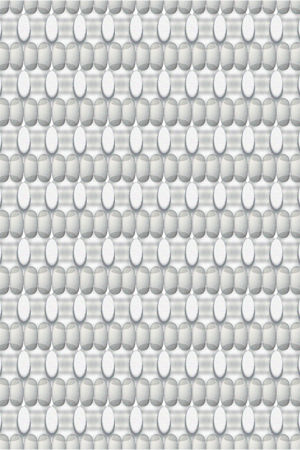
WOVEN DYNEEMA RADIAL
Hydranet radial or Fibercon Hybrid Pro
Hydranet radial is a tightly woven dyneema/polyester base with a ripstop of Ultra-PE. The composition leads to a high tear strength and thus a strong and durable cloth.
Fibercon Hybrid Pro is a woven radial construction with high strength dyneema yarns with a strong resistance to impact damage and wear and tear.

eXRP FILM/FILM LAMINATE
An EKKO option with recycled materials
A film/film laminate is a high strength-to-weight ratio laminate made with high-tech black polyester. It is great for fast upwind sails and code zeros. The film and the polyester fibers are made from recycled material.
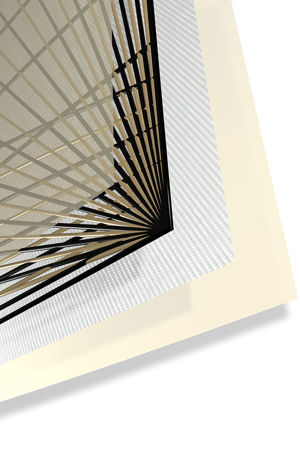
SINGLE INSIDE TAFFETA
An EPEX material
Single Inside Taffeta is a membrane with two side film and an inside taffeta. Great for fast upwind sails with good performance.
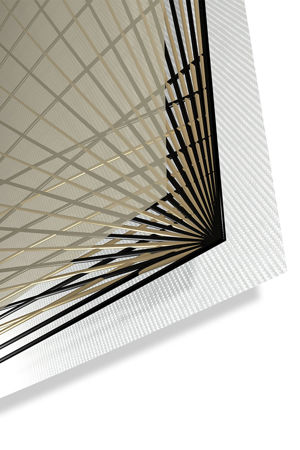
SINGLE OUTSIDE TAFFETA
An EPEX material
Single outside taffeta is a combination of taffeta on one side and film on the other. More flexible and lighter than the double outside combination. Taffeta is available in various weights and colours and can be combined with numerous fibres.

DOUBLE OUTSIDE TAFFETA
An EPEX material
Double outside taffeta is a combination with taffeta on both sides, that improves durability. Taffeta is available in various weights and colours and can be combined with numerous fibres.
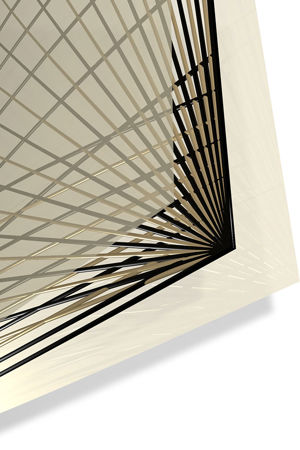
FILM/FILM
An EPEX material
The film/film is a lightweight high-performing racing membrane. The material is available in various weights and can be combined with various fibres.
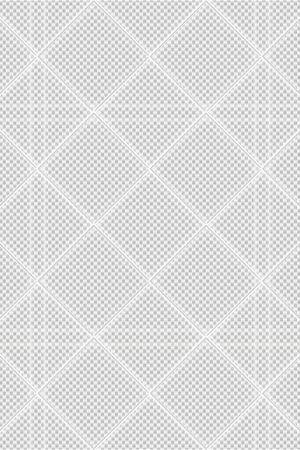
CODE TECH, POLY RIPSTOP
Poly Ripstop
A durable polyester reinforced Ripstop.
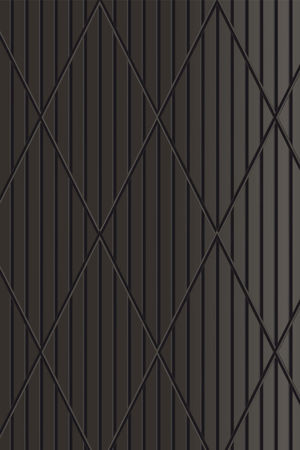
CODE LAMINATE, BZ
Lightweight taffeta
The code BZ laminate is a black lightweight taffeta with strong aramid fibres. It has taffeta on one side and film on the other side.
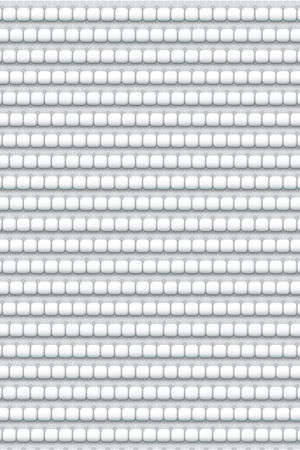
WOVEN POLYESTER (downwind)

NYLON
Tightly woven material
Nylon is tightly woven material. It is a very light sailcloth with a good breaking load ideal for downwind sails. Nylon comes in different colours and qualities, depending on the sailing preference.
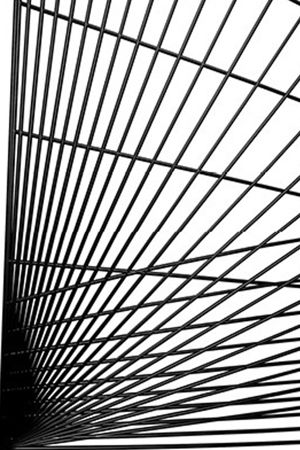
TECHNORA BLACK
The Technora black fibre is a high-performance fibre with high tenacity and low elongation, improving the shape of the sail.
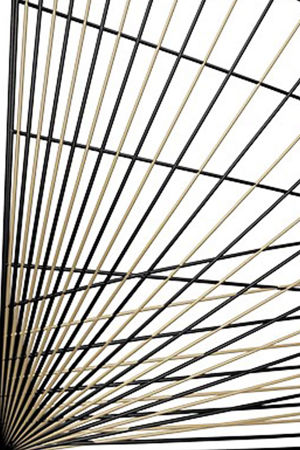
VECTRAN/TECHNORA
The Vectran/Technora fiber combination is a very popular fiber combination for the cruising sailor both high performing and durable.
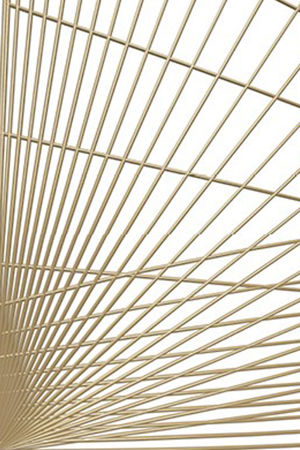
VECTRAN
The Vectran fibre is a strong yellowish / golden fibre with a good stretch resistance and durability.
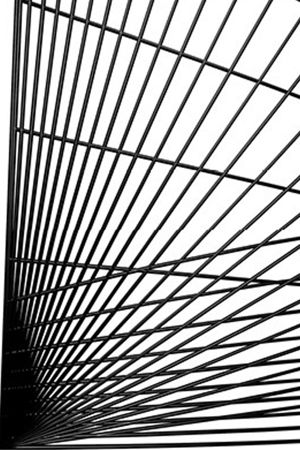
CARBON/TECHNORA
The Carbon/Technora fibre combination is an optimal solution in terms of shape and performance. Both fibres are black.

ARAMID GOLDEN
Aramid fibres are characterised by combining its lightweight properties with being high strength, having high stretch resistance and a high breaking strength. The material is stronger than steel, and this makes Aramid a great choice for a wide array of EPEX sails for Elvstrøm Sails – with the combination of strength and the low weight a good choice for cruising and racing applications alike.
The aramid is often known by its golden colour, which comes through the manufacturing process.

Does this mean that price and performance are linked?
Yes, absolutely! As with just about everything else, price is surely a factor that weighs up with the performance of a sail.
You will save money if you go for a woven polyester sail, but the peak performance is also quite different to what you get from our more expensive solutions.
The happy medium is to go for laminate sails. These are very popular as they provide a strong mid-range and long-lasting performance.
Over time, however, you will experience a drop in performance, and this is where you will see the advantages from our more expensive, but also better option: EPEX.
Which is better for what?
In general terms, we always recommend buying sails that are best suited for your needs as a sailor. Woven Polyester/Dacron has been the choice for family yachts and cruisers for decades and it continues so.
It is not optimized fully for racing per se, but it will give you long-lasting performance and it will suit all your needs for the family cruise and holidays.
The more performance-oriented cruisers are becoming increasingly popular. These are indeed yachts built for the sake of being the best of both worlds.
This is where the use of laminates and EPEX tends to be the top choice. The more performance oriented applications do demand stronger and more shaped sails, and this is where the difference becomes very clear. So to cut it short - if you are serious about your cruising, these are the sails for you.
EPEX is of course our strongest offering for racing. And no matter if your target is serious club racing or grand prixs, EPEX is the way to go. These sails are holding the shape better for longer and it also gives you a wealth of options in terms of materials, designs, taffetas and more.
In short, this is our top-tier product and the ideal choice for the racer that won’t take the word compromise for an answer.
How do I choose what type of sail to go for?
At Elvstrøm Sails, we always start out with your requirements and way of sailing. Elvstrøm Sails has a product range which has been divided into six segments to make it easier for you to choose your next set of sails.
The segments have a name each and are profiled towards different types of sailors. They are:
Alisio – aimed at daysailors and leisure users.
Marin – for the performance-oriented cruisers – also a good choice for crossover use, so you can do leisure and cruising as well as club racing on the same set of sails.
Solano – aimed at the adventurers. This segment is for the big journeys and for the blue water adventures.
Koonaa - is our current offering for Multihulls, and it holds great options for both leisure and more performance-oriented use.
For the Racers, Elvstrøm Sails has two segments.
Maestro is for the keen club and national racers while Zonda is our segment for top level Grand Prix racing – all focused on one thing – and one thing only: Uncompromised performance.

What is EKKO?
EKKO is our approach to creating sails for a greener future. EKKO was as a more sustainable alternative to regular laminates, as the taffeta is almost entirely consisting of plastics derived from recycled PET/polyester bottles.
It is strengthened with the use of up to 5% virgin UPE fibres, but everything else is made from recycled materials. This also includes the rest of the main components, the UV film and the fibres - all sourced from recycled materials.
How does EKKO differ from equivalent, but non-sustainable options?
EKKO is made almost entirely from recycled PET/polyester bottles. The recycling process makes your bottle of mineral water or soda into new materials we can use to produce the taffeta of your next sail. In the process, 3-5% of virgin and thus non-recycled UPE fibres are added for stability, but the remaining 95-97% of the material is the recycled PET-material.
What's the deal with battens – which ones and why?
Battens are in the sail to make the performance smoother and especially on sails with larger roaches, it makes the sail easier to control. And – first and foremost – it makes the sail tend to flog less, and it helps the sail hold a better shape as it stiffens the material up length or heightwise.
Full-batten mainsails are often seen on Multihull boats as the design enables to use more roach. (ILLUSTRATION) The full batten setup is also easier to handle, which makes it good for shorthanded or singlehanded use.
Spinnakers vs genoas vs gennakers
The spinnaker and the genoa are two different sail types for two different jobs sailing downwind. Where especially spinnakers are made for certain downwind conditions and wind angles wind angles, the genoa and indeed the gennaker cover a wider spectrum. So what if one wants a more allround and multipurpose setup than the classic spinnaker? This is where the gennaker comes into play.
The gennaker covers wider angles and is used entirely without a spinnaker pole, making it much easier to rig, handle and fly. It also makes it an attractive solution for singlehanded sailing as it is less complicated to hoist and douse than – for instance – a real spinnaker.
Avoid sharp edges
It is inevitable that a sail will run and rub against rigging and hardware, but there are important, simple and inexpensive measures you can take to avoid damage. Headsails can hit the spreader tips – this is where you want to use patches to take the toll rather than the sail itself.
Use sail rollers on the shrouds and make sure to tape over any sharp hardware edges and cotter pins, and then you are safer.
What are patches made for – and why are they so important?
Patches are your way to ensure that the sail will not get mechanical damage from touching or riding on parts of the boat. The sail could for instance rub against spreaders, reelings, pulpits and so on. The patch takes the load and it is much easier (and cheaper!) to replace than a broken sail.

Sail Layouts
Crosscut vs radial/tri-radial layouts all come down to the nature of Dacron. Dacron is a woven material, which has fibres running in different directions. The material tends to be stronger in its so-called fill fibres, which are the ones that run perpendicular to the length of a roll of Dacron.
Crosscut panel sails are laid out with a fill-oriented design. Here, the strongest yarns are always running parallel to the leech, where as a radial sail is warp oriented. This means that its strongest yarns are running along the length of the narrow panels. This makes the crosscut design much more effective in terms of cost.
The radial layout concept differs from the crosscut by running down the middle. The layout makes the sail more stretch stable, and in the long run it will also keep shape a better than crosscut variants. Radial sails are also known as triradial sails.
In more concrete terms, the two layouts also differ in price and precision. A crosscut sail is easier and cheaper to produce, but it will also impose a loss of sail shape over time for the cheaper price, where the tri-radial sails are better on shape and longevity - but it also costs more to produce and buy.
Furling - easy handling sails
One of the solutions which have gained an immense popularity over the last decades, is the furling sail.
To furl the sail was and is a gamechanger in terms of easy handling and making sailing a breeze - quite literally.
Elvstrøm Sails was and is one of the pioneers in developing the furling concept - from the smaller jibs of the 80's and 90's to become a way of running the entire boat. In-Mast Furling - furling the mainsail inside the mast was one of the gamechangers here, and it meant that setting the mainsail is only a matter of rolling it out of the mast.
One of the big changes was the use of long vertical battens in the mainsail, put into production in the shape of the Elvstrøm Sails EMS Furling Mains, which led the way for the FatFurl and FatFurl XL concepts of today.
Can I buy used sails and Elvstrøm Sails?
Through Netsails, we have a constant variety of used sails on offer. The stock varies in models, prices and condition, so the best advice is to check out what's on offer today.

